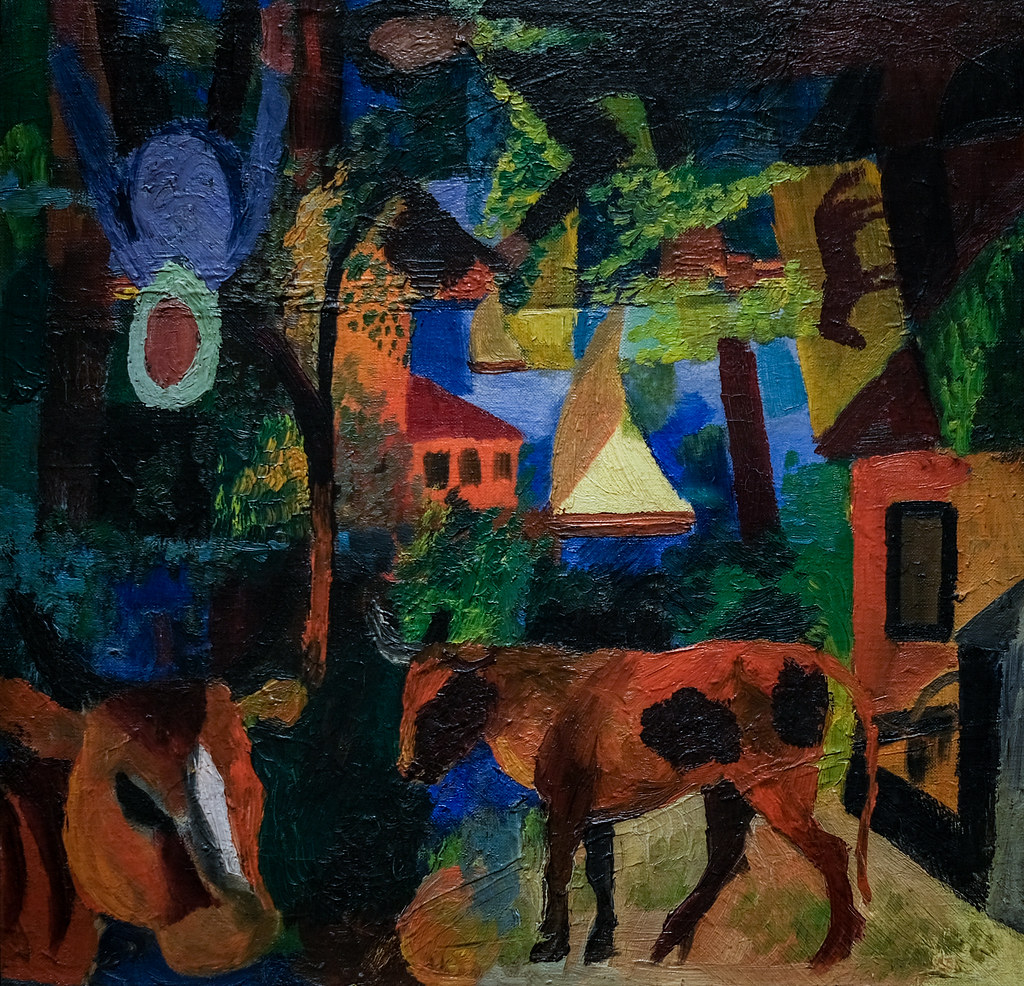#Saint Louis Art Museum
Text

The Plaza after the Rain, Paul Cornoyer, 1908
#art#art history#Paul Cornoyer#cityscape#Impressionism#Impressionist art#American Impressionism#American art#20th century art#oil on canvas#Saint Louis Art Museum
410 notes
·
View notes
Text

Fluxkit (1966-67)
#George Maciunas#Eric Andersen#Ay-O#George Brecht#Robert Filliou#Albert Fine#Shigeko Kubota#Serge Oldenbourg#James Riddle#Mieko Shiomi#Ben Vautier#Robert Watts#Ken Friedman#Saint Louis Art Museum#station
153 notes
·
View notes
Photo
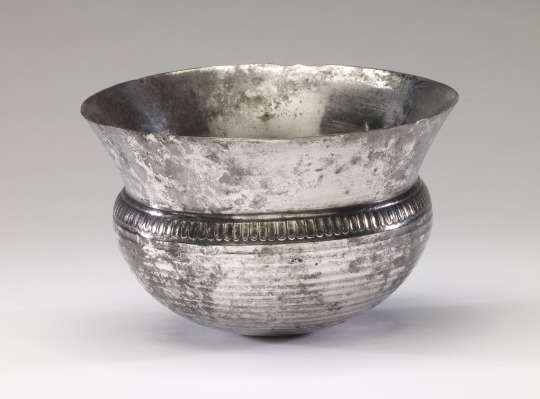
Silver bowl
Persian, Achaemenid Period, 6th to 5th century B.C.
Saint Louis Art Museum
#ancient art#archaeology#Persian#Ancient Persia#Ancient Iran#Achaemenid Period#Achaemenid Empire#Saint Louis Art Museum#SLAM#silver#vessel#bowl#metalwork
173 notes
·
View notes
Text
It's #WorldGorillaDay! 🦍

Houston Chandler (American, 1914–2015)
Gorilla, c.1946
Wood, 8 5/8 x 7 3/4 x 5 1/8 in. (21.9 x 19.7 x 13 cm)
Saint Louis Art Museum 1124:2010
"'Gorilla' features smooth surfaces, abstracted forms, and a masklike face. These elements are evidence of Houston Chandler’s search for 'the simplicity that brings out the greatest line of expression.' Though the gorilla rests in a hunched pose, its muscular limbs, arranged in diagonals across its body, allude to its physical power."
#animals in art#animal holiday#20th century art#1970s#World Gorilla Day#Saint Louis Art Museum#sculpture#woodwork#gorilla#ape#primate#Houston Chandler#American art#modern art#African American art
13 notes
·
View notes
Video
August Macke, Landscape with Cows Sailboat and Painted-in Figures, 1914, Oil on canvas, 8/9/23 #StlArtMuseum by Sharon Mollerus
#Saint Louis Art Museum#1914#Landscape with Cows Sailboat and Painted-in Figures#StlArtMuseum#Oil on canvas#August Macke#8/9/23 StlArtMuseum#Missouri#St. Louis#MO#flickr
6 notes
·
View notes
Text

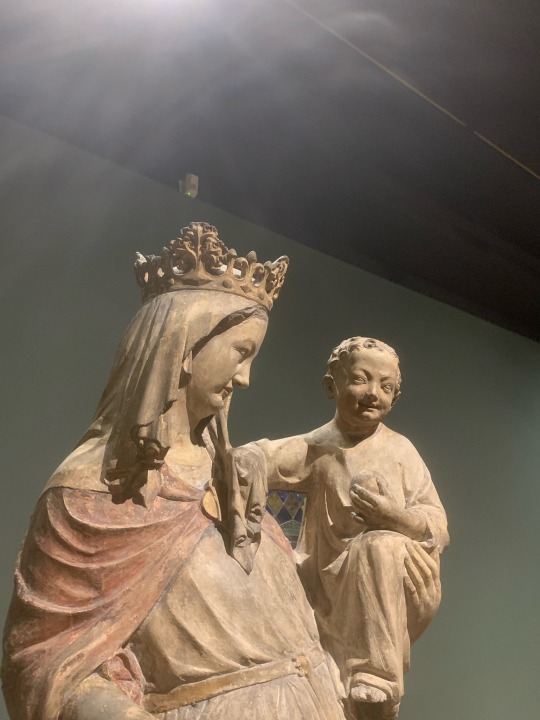





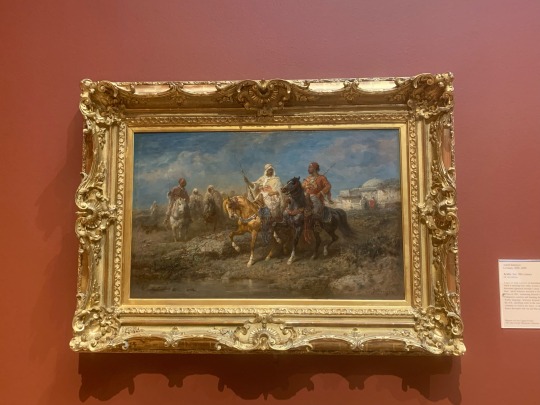
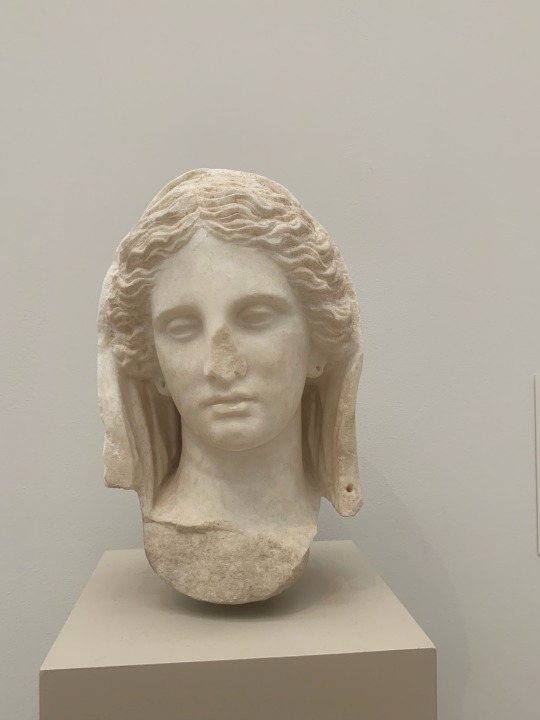
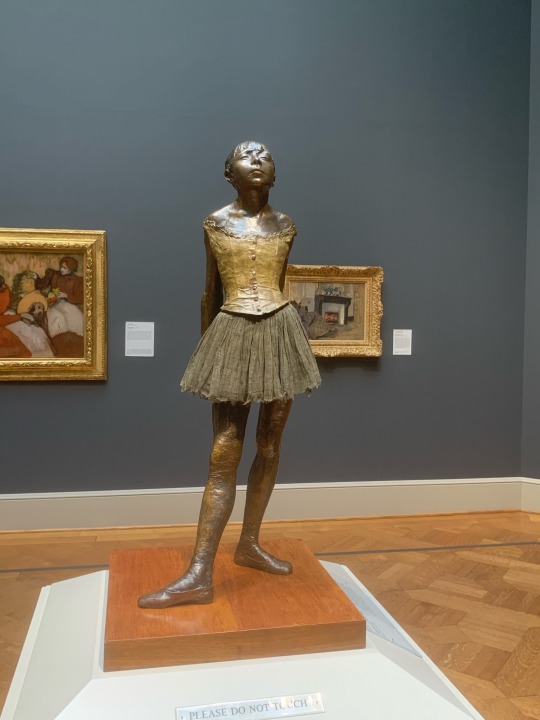
I went to Saint Louis today. Here are some of my favorite pictures from the Art Museum. I might post some more later.
#personal#posts#pictures#saint louis#Missouri#Saint Louis art museum#art museum#degas#I’ve thought about posting pictures from my trips in the past but I never did#don’t know if I will in the future or not#Catholic art#paintings#sculptures#art#travel#st Louis#st louis mo#st Louis art museum#light academia#dark academia#romantic academia#art academia
13 notes
·
View notes
Photo
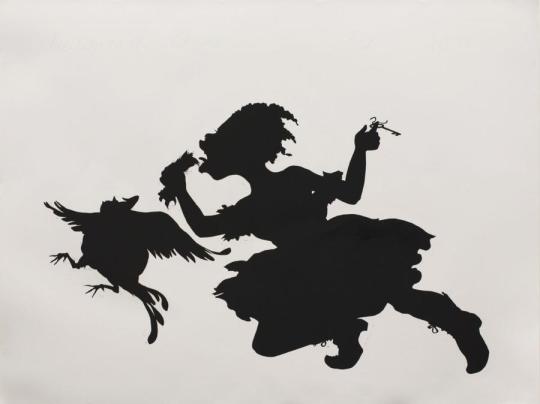
Kara Walker, “The Keys to the Coop”, 1997,
Linocut; 46 1/4 x 60 1/2 inches,
Saint Louis Art Museum,
© Kara Walker
8 notes
·
View notes
Photo

Enrique Chagoya, “Illegal Alien's Guide to Somewhere Over the Rainbow”, 2010,
Lithograph with chine colle,
Sheet: 24 5/8 x 40 3/4 inches, image (variable): 23 1/2 x 39 1/2 inches.
Saint Louis Art Museum, Gift of Ted L. and Maryanne Ellison Simmons
#art#poster#illegal#alien#enrique chagoya#guide#over the rainbow#lithograph#surreal#funnyshit#funnypics#saint louis art museum
5 notes
·
View notes
Text
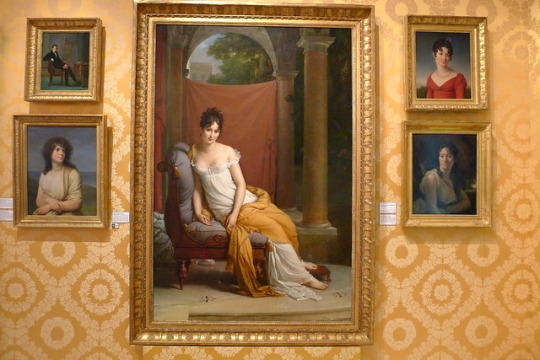


First Empire rooms at the Carnavalet Museum in Paris
(source)
#Musée Carnavalet#Carnavalet Museum#Hôtel Le Peletier de Saint Fargeau#paris#napoleonic era#napoleonic#first french empire#french empire#napoleon#Juliette Récamier#Madame Récamier#Récamier#François Gérard#gérard#history#art history#1800s#jacques louis david#tallien#thérése tallien#Fabre#françois xavier fabre
45 notes
·
View notes
Photo

Wandering around St. Louis we happened upon the Flags of Valor display all lit up at night at the St. Louis Art Museum. I took this shot with the art museum in the background and absolutely love how the flag color pops in the watercolor. From their website, "Every service man and woman who has died in the War on Terror since September 11, 2001 will be remembered with an individual flag planted on Art Hill in St. Louis’ Forest Park. Each flag will be displayed chronologically and marked by a photograph and dog tag of the hero.
https://www.etsy.com/listing/1292777888/flags-of-valor-american-flag-patriotic
#forest park#STL#flags of valor#america#4th of july#art hill#st. louis#saint louis#st. louis art museum#stl art museum#american flag#september 11
0 notes
Text
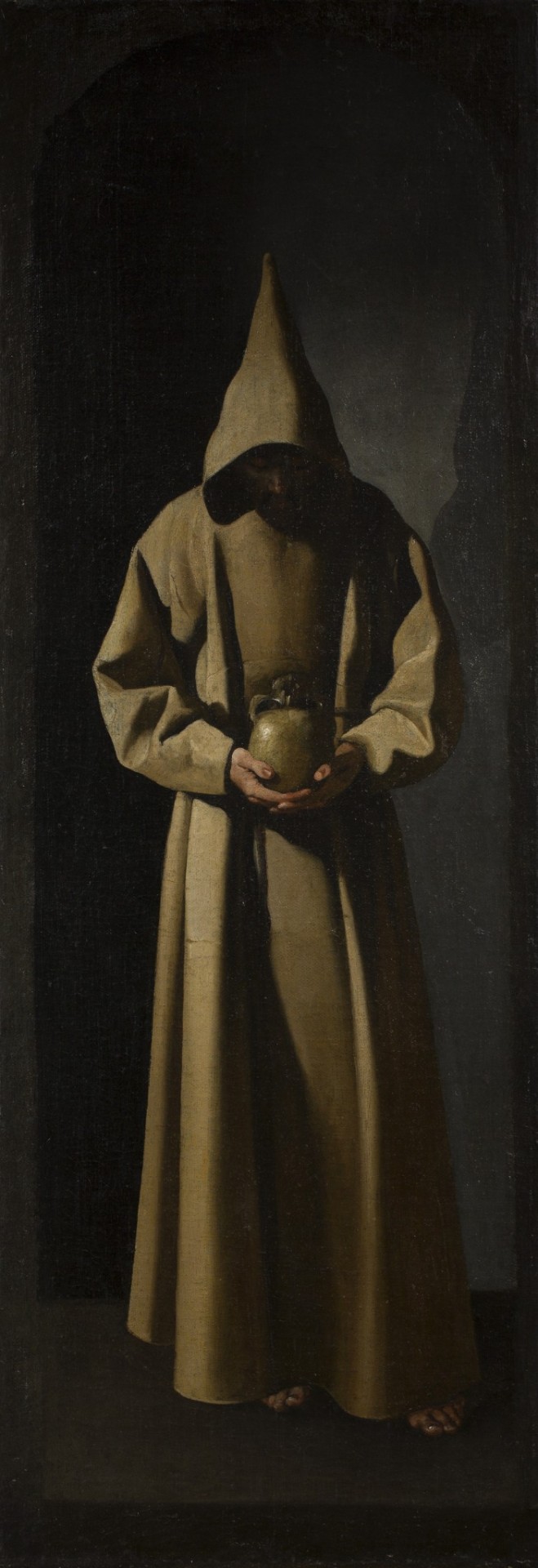
Baby's first profile pic
#St. Francis Contemplating a Skull#Francisco de Zurbarán#Saw this piece a year ago#loved it so much that I took a picture#bought a print#and now it me#we stan the Saint Louis Art Museum#Lposts
0 notes
Text
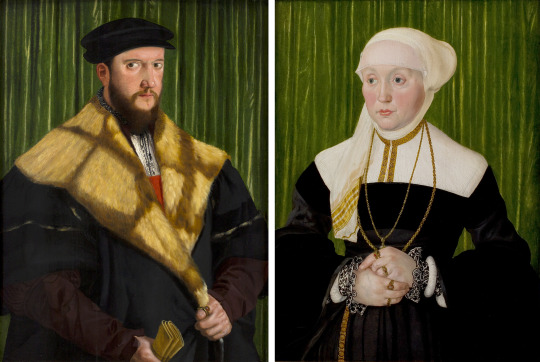
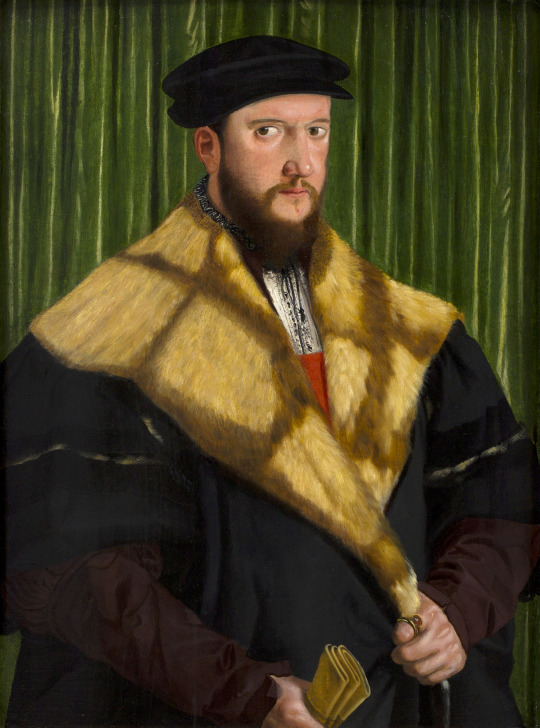

1540-1541 Hans Mielich (Muelich) - Portraits of a couple, three-quarter-length
(Saint Louis Art Museum)
171 notes
·
View notes
Text
Horned hermits and immoral immortals: an inquiry into Zanmu's background

As you might remember from my previous post covering Zanmu, I was initially unable to tell how her historical background led to ZUN choosing to make her an oni. The historical, or at least legendary, Zanmu seemed to be, for all intent and purposes, a human. That has since changed, and the matter now seems considerably more clear to me. Read on to learn more about the real monk Zanmu is based on, and to find out what she has in common with the most famous Zen master in history, Taoist immortals, and Tsuno Daishi.
Even if you are not particularly interested in Zanmu, this article might still worth be checking out, seeing as the discussed primary sources are also relevant to a number of other Touhou characters, including Byakuren, Yoshika and Kasen.
As in the case of the previous Touhou article, special thanks go to @just9art, who helped me with tracking down sources advised me while I was working on this.
The historical Zanmu
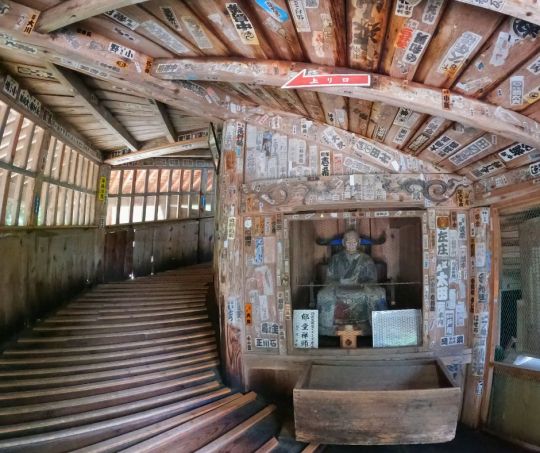
Statue of Zanmu from the Sazaedo pagoda (Fukushima Travel; reproduced for educational purposes only)
As already pointed out by 9 here even before my previous post about Unfinished Dream of All Living Ghost, Zanmu is based on a real monk also named Zanmu. His full name was Nichihaku Zanmu (日白残夢), and he also went by Akikaze Dōjin, but even Japanese wikipedia simply refers to him as Zanmu. ZUN basically just swapped one kanji in the name, with 日白残夢 becoming 日白残無. The character 無, which replaces original 夢 (“dream”), means “nothingness” - more on that later.The search for sources pertaining to the historical Zanmu has tragically not been very successful. In contrast with some of the stars of the previous installments, like Prince Shotoku or Matarajin, he clearly isn’t the central topic of any monographs or even just journal articles. Ultimately the main sources to fall back on are chiefly offhand mentions, blog articles and some tweets of variable trustworthiness.
The only academic publication in English I was able to locate which mentions Zanmu at all is the Japanese Biographical Index from 2004, published by De Gruyter. The price of this book is frankly outrageous for what it is, so here’s the sole mention of him screencapped for your convenience:

The book referenced here is the five volume biographical dictionary Dai Nihon Jinmei Jisho from 1937. I am unable to access it, but I was nonetheless able to cobble together some information about Zanmu from other sources.
Not much can be said about Zanmu’s personal life. He was a Buddhist monk (though note a legend apparently refers to him as “neither a monk nor a layperson”, a formula typically designating legendary ascetics and the like) and a notable eccentric. Both of these elements are present in the bio of his Touhou counterpart.

The Sazaedo pagoda (Fukushima Travel; reproduced for educational purposes only)
Zanmu’s tangible accomplishments seem to be tied to the temple Shoso-ji, which he apparently founded. He is enshrined in the Sazaedo pagoda near it, though this building postdates him by over 200 years. It’s located in Aizuwakamatsu in Fukushima. You can see some additional photos of his statue displayed there in this tweet. It’s a pretty famous location due to its unique double helix structure, and it has a pretty extensive article on the Japanese wikipedia. It’s also covered on multiple tourist-oriented sites in English, where more photos are available (for example here or here). There’s even a model kit representing it out there. Sazeado’s fame does not really seem to have anything to do with Zanmu, though.
While many Buddhist figures ZUN used as the basis for Touhou characters in the past belonged to the “esoteric” schools (Tendai and Shingon), Zanmu was a practitioner of the much better known Zen, specifically of the Rinzai school.

The kanji mu (無 ) caligraphed by Shikō Munakata (Saint Louis Art Museum; reproduced for educational purposes only)
Since the concept of “nothingness” or “emptiness” represented by the kanji 無 (mu) plays a vital role in Zen (see here or here for a more detailed treatment of this topic; it’s covered on virtually every Zen-related website possible though), and there’s even a so-called mu kōan, it strikes me as possible this is the reason behind the slightly different writing of the names of ZUN’s Zanmu, as well as the source of her ability. Granted, the dialogue in the games makes it sound like Zanmu (and by extension Hisami) just talks about nothingness as a memento mori of sorts, which is not quite what it entails in Zen. Of course, ZUN does not adapt Buddhist doctrine 1:1 (lest we forget Kasen seemingly being unaware of the basics of Mahayana in WaHH) so this point might be irrelevant.
The legendary Zanmu
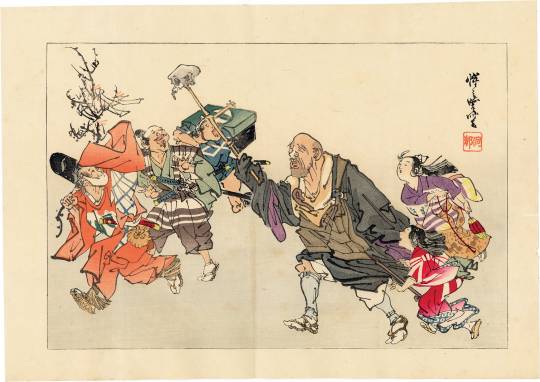
The eccentric monk Ikkyū (center), as imagined by Kawanabe Kyōsai (Egenolf Gallery; reproduced for educational purposes only)
A number of legends developed around the historical Zanmu. If this blog post is to be trusted, there is a tradition according to which he was a student of arguably the most famous member of the Rinzai school, and probably one of the most famous Buddhist monks in the history of Japan in general, Ikkyū. He is remembered as the archetypal eccentric monk, and spent much of his life traveling as a vagabond due to his disagreements with Buddhist establishment and unusual personal views on matters such as celibacy. As I already said in my previous article pertaining to Zanmu, long time readers of my blog might know Ikkyū from the tale of Jigoku Dayū and art inspired by it, though since this motif only arose in the Edo period it naturally does not represent an actual episode from his very much real career.
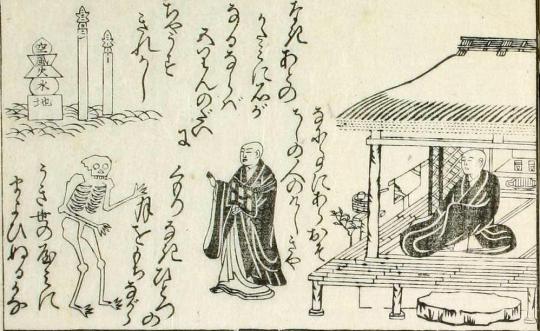
A page from Ikkyū Gaikotsu (wikimedia commons)
In art a distinct tradition of depicting Ikkyū with skeletons developed, as seen both in the case of works showing him with his legendary student Jigoku Dayū and in the so-called Ikkyū Gaikotsu. Skeletons also played a role in Zen-inspired art in general (for more information see here). Whether this inspired ZUN to decorate Zanmu’s rock with bones is hard to determine, but it does not seem implausible. It would hardly be the deepest art history cut in the series, less arcane of a reference than the very existence of Mai and Satono or Kutaka’s pose.
Obviously, it does not seem very plausible that Ikkyū ever actually met the historical Zanmu. Ikkyū passed away in 1481, and Zanmu in 1576, with his birth date currently unknown. Even if we assume he was a particularly long-lived individual and by some miracle was born while Ikkyu was still alive, it is somewhat doubtful that an elderly sick monk would be preaching Zen doctrine to an infant. However, apparently legends do provide a convenient explanation for this tradition. Purportedly Zanmu lived for an unusually long time. The figure of 139 years pops up online quite frequently, and does seem to depend on a genuine tradition, but even more fabulous claims are out there.
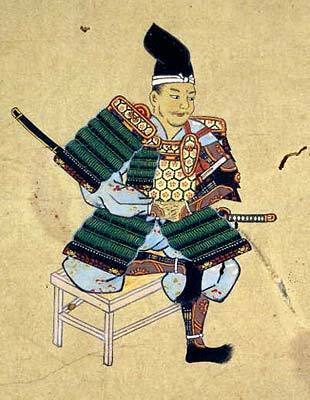
Kaison Hitachibō, as imagined by an unknown artist (wikimedia commons)
According to another legend, Zanmu was even older, and in fact remembered the Genpei war, which took place in the Heian period - nearly 400 years before his time. Supposedly he told many vivid tales about its famous participants, Yoshitsune and Benkei. A tradition according to which he was himself originally a legendary retainer of Yoshitsune, the warrior monk Kaison Hitachibō (常陸坊海尊) developed at some point. This has already been pointed out by others before me in relation to the Touhou version of Zanmu. From what I’ve seen, some Japanese fans in fact seem excited primarily about the prospect of Zanmu offering an opportunity to connect Touhou and works focused on the Genpei war.
The tradition making Zanmu a centuries-old survivor from the Heian period must be relatively old, as his supposed immortality is already mentioned in Honchō Jinja Kō (本朝神社考; “Study of shrines”) by Razan Hayashi, who was active in the first half of the seventeenth century, mere decades after Zanmu’s death. While I found no explicit confirmation, it seems sensible to assume this legend was already in circulation while Zanmu was still alive, or at least that it developed very shortly after he passed away. Perhaps he really was invested in accounts of that period to the point he sounded as if he actually lived through it.
The choice of Kaison as Zanmu’s original name in the legend does not seem random, as there was a preexisting tradition according to which this legendary Heian figure was cursed with eternal life for betraying Yoshitsune by fleeing from the battlefield instead of remaining with his lord to die. You can read more about this here. Apparently there is a version where he instead becomes immortal to make it possible to pass down the story of the Genpei war to future generations (this is the only source I have to offer though), and there's even a well-received stage play based on it, Hitachibō Kaison (translated as "Kaison, priest of Hitachi") by Matsuyo Akimoto.
Another thing worth pointing out is that Kaison was seemingly a Tendai monk from Mount Hiei, which means that even though Okina isn’t in a new game, you can still claim she’s metaphorically casting her shadow over it in some way if you squint (and that’s without going into the fact sarugami are associated with Mount Hiei). I've seen two separate sources which mention that according to a legend he trained Benkei there, and that the two did not get along because Kaison was a corrupt monk (lustful, keen on substance abuse, greedy, the usual routine). You can access them here and here,but bear in mind they're old.
Zanmu’s Genpei war connection does not really seem to matter in Touhou, though, as ZUN pretty explicitly situated his version in the Sengoku period, with no mention of earlier events. Granted, if you like it, this should not prevent you from embracing the view that Zanmu is an alter ego of Kaison as your headcanon - as I said people are already doing that. It seems equally fair game as “Okina is Hata no Kawakatsu”, easily one of the most popular “historical” headcanons in the history of the franchise.
According to this twitter thread, the legends about Zanmu’s longevity (or immortality) have a pretty long lifespan themseles, as they were referenced by relatively high profile modern writers, like Orikuchi Shinbou and Tatsuhiko Shibusawa.
Buddhist immortals
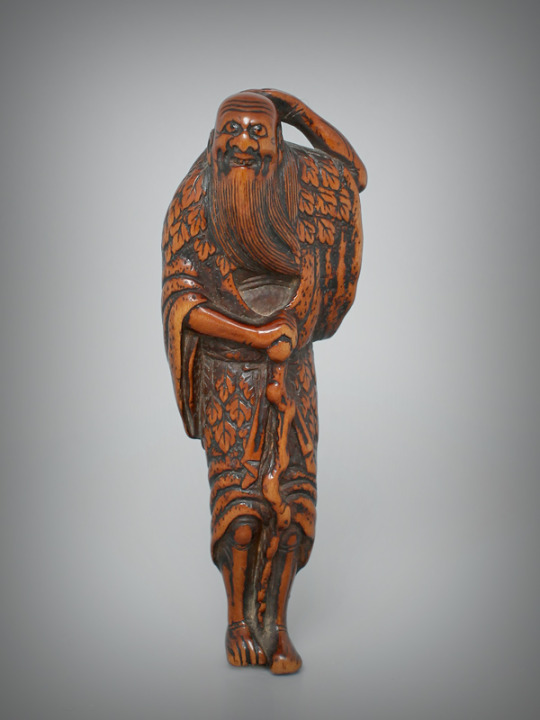
A word carving of a sennin, "immortal" or "hermit" (wikimedia commons)
Legends about long-lived (or outright immortal) monks, such as Zanmu or Kaison, are hardly uncommon. A work which seems to be the key to understanding their early development, and by extension possibly also the portrayal of Zanmu in Touhou, might be Honchō Shinsenden, “Records of Japanese Immortals”. This title refers to a collection of setsuwa, short stories typically meant to convey religious knowledge or morals. Its title pretty much tells you what to expect.
Honchō Shinsenden is an interesting work in that while it in theory deals with Buddhism, and largely describes the individual immortals as, well, Buddhists, it ultimately reflects a Taoist tradition. There is a strong case to be made that it was an inspiration for another Touhou installment, specifically Ten Desires, already, seeing as it mentions prince Shotoku and Miyako no Yoshika and its Taoist-adjacent context has a long paper trail in scholarship, but I will not go too deep into that topic here - expect it to be covered in a separate article later on.
Stories of immortals are pretty schematic, and their protagonists can be categorized as belonging to a number of archetypes. I think it’s safe to say this has a lot to do with the self-referential character of this sort of literature - compilers of new works were obviously familiar with their forerunners, and imitated them for the sake of authenticity. In China, literary accounts of the lives of immortals circulated as early as in the first century BCE, with the concept of immortals (xian, 仙, read as sen in Japanese; this term and its derivatives have various other translations too, with Touhou media generally favoring “hermit”) itself already appearing slightly earlier.
It seems Shenxian Zhuan (Biographies of Spirit Immortals) by a certain Ge Xuan, certified immortals enthusiast and cinnabar-based immortality elixir connoisseur (discussing and developing immortality elixirs was a popular pastime for literati in ancient and medieval China), can in particular be considered the inspiration for the later Japanese compilation.
While the concept of immortals was largely developed by Taoists, tales focused on them were already not strictly the domain of Taoism by the time they reached Japan. They were embraced in Chinese culture in general, both in strictly religious context and more broadly in art. In Japan, they came to be incorporated into Buddhist worldview, and in fact Honchō Shinsenden states that their protagonists can be understood as “living Buddhas” (ikibotoke), a designation used to refer to particularly saintly Buddhists. Their devotion to both Buddhas and other related figures, and to local kami, is stressed multiple times too.
Presumably this was the result of the influence of the Japanese Buddhist concept of hijiri (聖), a type of particularly rigorous solitary ascetic in popular imagination regarded as almost divine. Needless to say, most of you are actually familiar with the hijiri even if you never read about them, as this is the source of Byakuren’s surname and a clear influence on her character too. In Honchō Shinsenden, it is outright said that the sign 仙, normally read as sen, should be read as hijiri in this case.

A portrait of Huisi (wikimedia commons)
The notion of extending one’s lifespan was not incompatible with Buddhism, as evidenced by tales of adepts who lived for a supernaturally long period of time to show their compassion to more beings or to get closer to the coming of Maitreya. Even the founder of the Tiantai school of Buddhism (the forerunner of Japanese Tendai), Huisi, was said to meditate in hopes of extending his life to witness Maitreya. At the same time, Chinese compilations of stories about immortals do not list Buddhists among them, in contrast with Japanese ones. This might be due to the rivalry between these religions which was at times rather pronounced in Tang China, culminating in events such as emperor Wuzong's persecution of Buddhism.
Let’s return to Honchō Shinsenden, though. Its original author was most likely Ōe no Masafusa, active in the second half of the eleventh century. No full copy survives, but the original contents can nonetheless be restored based on various fragmentary manuscripts. Some of the sections are preserved as quotations in other texts or in larger compilations of stories, too. I have seen claims online that the historical Zanmu is covered in some editions of the Honchō Shinsenden or works dependent on it. So far I was only able to determine with certainty that Zanmu is covered alongside the immortals from Honchō Shinsenden in at least one modern monograph (Nishi-Nihon-hen by Kōsai Chigiri; if anyone of you have access to it I’d be interested to learn what exactly it says about Zanmu) and a number of posts and articles online. However, he lived around 400 years after this work was completed, so he quite obviously does not appear in its original version, contrary to what the Touhou wiki says right now.
Masafusa does not necessarily portray the immortals as pinnacles of morality, and indeed moral virtues do not seem to be a prerequisite for attaining this status in his work. It is therefore possible that despite being setsuwa, his tales of immortals were an entirely literary endeavor and were not meant to evoke piety, let alone promote the worship of described figures.
A recurring pattern which unifies all of these tales is describing immortals as eccentric. As I already noted, this is a distinct characteristic of the historical Zanmu too, and it comes up in the bio of his Touhou counterpart as well. She has “reached the absolute pinnacle of eccentricity”. It seems safe to say ZUN is aware of that pattern, then, and consciously chose to highlight this. He also stresses that Zanmu has lived through an era of marital strife, specifically through the Sengoku period. The inclusion of such episodes is another innovation typical for Japanese immortal tales, and does appear to be a feature of the tradition pertaining to Zanmu’s counterpart too, as discussed above.
Horned hermits?

A modern devotional statuette of Laozi with horns, found on ebay of all places; reproduced here for educational purposes only.
There is a further possible feature of Zanmu that might be tied to Honchō Shinsenden. While there are numerous physical traits attributed to immortals in Chinese sources, Masafusa decided to only ever highlight two. One of them are unusual bones, the other - horns on the forehead. Tragically one of my favorites, square pupils (mentioned in Liexian Zhuan), is missing. Masafusa relays that an anonymous hijiri, the “Rod-Striking Immortal”, grew stumpy horns as a sign of attaining his supernatural status.This might be a stretch, but perhaps Zanmu, due to being the Touhou version of a legendary immortal, also already had horns before becoming an oni. You have to admit it would be funny.
The two horns - or rather small bumps, based on available descriptions - characteristic for some immortals were known as rijiao (日角; “sun-horn”) and yuenxuan (月懸; “moon crescent”). Such unusual physical features were already attributed to various legendary and historical rulers and sages in China in the first century CE, so this is not really a Taoist invention, but rather an adoption of beliefs widespread in China in the formative years of this religion. They also intersected with the early Buddhist tradition about the so-called “32 marks of the Buddha”, documented for example in Mahāvastu and later in Chinese Mahayana tradition which Taoist authors were familiar with. Yu the Great, the flood hero, was among the legendary figures said to possess horns in Chinese tradition. It is even sometimes believed Laozi had them when he was born, which according to Livia Kohn was meant to symbolically elevate him to the rank of such mythical figures as Fuxi.
While this is ultimately a post focused on Zanmu, I think it’s worth pointing out this belief in horned ascetics has very funny implications for Kasen. Being a “horned hermit” is not really an issue, it would appear. If anything, it adds a sense of authenticity. Clearly Kasen needs to study the classics more.
Immortals (and mortals) in hell
One last connection between Zanmu and legends about immortals is her role as an official in hell. However, this is much less directl. Early Chinese sources mention “Agents Beneath the Earth” (dixia zhu zhe 地下主者), a rank available to low class immortals choosing to serve in the land of the dead. They could be contrasted with the immortals inhabiting heaven, regarded as higher ranked than them. However, note that there are also many narratives focused on mortals becoming officials in hell - in Japan arguably the most famous case is the tale of Ono no Takamura, a historical poet from the early Heian period. In Chinese culture there are multiple examples but I think none come close to the popularity of judge Bao. It does not seem any immortals playing a similar role retain equal prominence in culture.
Ultimately this paragraph is only a curiosity, and a much closer parallel to Zanmu's role in hell exists - and it’s connected to materials ZUN already referenced to booth.
Corrupt monks, oni and tengu
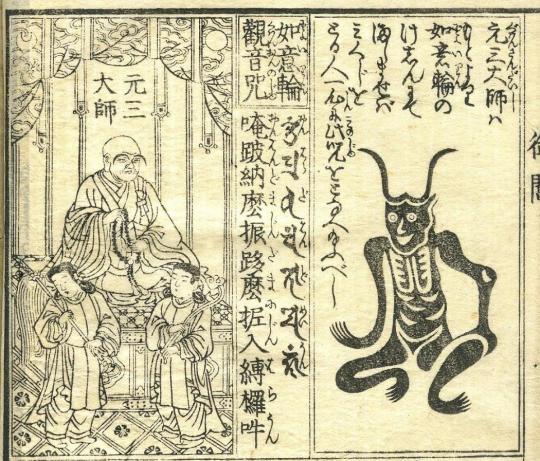
Ryōgen, the most famous monk turned demon, and his alter ego Tsuno Daishi (wikimedia commons)
In addition to characterizing Zanmu as eccentric, ZUN also wrote in her bio that she is a corrupt monk. As we learn, she developed a belief that the best way to reconcile the Sengoku period ethos which demanded boasting about the number of enemies killed with Buddhist precepts was to focus on spirits rather than the living, since she will basically deliver salvation to them. She ultimately “absorbed some beast-youkai spirits, thus discarding her life as a human”. This to my best knowledge does not really match any genuine tradition about the historical Zanmu, related figures or anyone else. As far as I can tell, it’s hard to find a direct parallel either in irl material or elsewhere in Touhou... at least if we stick to the details. More vaguely similar examples are not only attested, discussing them was for a time arguably the backbone of Buddhist discourse in Japan, and neatly explains why Zanmu became an oni.
The idea that monks who broke Buddhist precepts in some way turned into monsters is not ZUN’s invention. It first appears in sources from the Heian period, and gained greater relevance in the Kamakura period. Particularly commonly it was asserted that members of Buddhist clergy who fail to attain nirvana turn into tengu. However, oni were an option too. Bernard Faure points out that Ryōgen, the archetypal example of a fallen monk (see here for a detailed discussion of this topic, and of his return to grace as a demon keeping other demons at bay), could be described as reborn as an oni, for example. The Shingon monk Shinzei is variously described as turning into an oni, a tengu or an onryō (vengeful spirit). Oni are also referenced in a similar context in Heike Monogatari alongside tenma, a term referring to demons obstructing enlightenment in general.
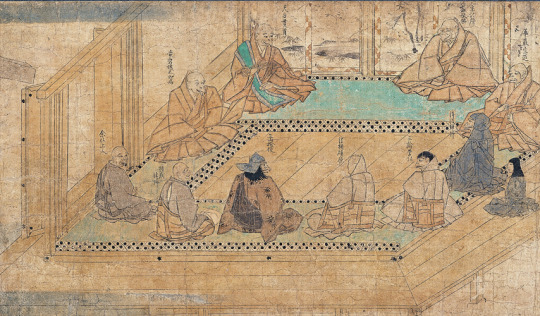
Corrupt monks turned into tengu in the Tengu Zoshi Emaki (wikimedia commons)
Typically it was believed that monks who turned into demons went to a realm variously known as makai, tengudō or madō. As you may know, normally there are three realms one should avoid reincarnating in - beasts, hungry ghosts and hell - but this was basically a bonus fourth one. Granted, this view was not recognized universally, and the alternative interpretation was that it was just a specific hell with a distinct name.
At the absolute peak of this concept’s relevance, the foremost Buddhist thinkers of these times, including Nichiren, were accusing each other of being demons. Additionally, some of the past emperors, especially Sutoku and Goshirakawa, could be presented as tengu, for example in Hōgen monogatari. There was also an interest in finding gods who could keep the forces of disorder at bay. You can see echoes of these beliefs in rituals pertaining to Matarajin, which ZUN rather explicitly referenced in Aya's route in Hidden Star in Four Seasons.
Typically the reason behind transformation into an oni, tengu or another vaguely similar being were earthly attachments. Alternatively, it could be pursuing gejutsu, “outside arts”, essentially teachings which fell outside of what was permitted by Buddhism. Note this does not necessarily mean anything originating in religions other than Buddhism, though, the term is more nuanced. So, for instance worship of kami or following Confucian values are perfectly fair game. A synonymous term was gedō, “heretical” way (on the use of the term “heresy” in the context of study of Buddhism see here). We can make a case for Zanmu’s bio alluding to that - she wanted to adhere to the social norms of the Sengoku period by symbolically taking in a headcount by absorbing spirits, I suppose. That’s not really a thing in any Buddhist literature, though, and I assume ZUN came up with this himself.
Conclusion
While this article is slightly less rigorous than my recent research ventures pertaining to Matarajin, let alone the Mesopotamian wiki operations, I hope it nonetheless sheds some additional light on Zanmu. I will admit I already liked her even before I started digging into the possible inspiration behind her, and finding out more only strengthened my enthusiasm.
While there are clear parallels between Zanmu, her namesake and a variety of other characters from Japanese and Chinese literature and religions, as usual for a character made by ZUN her strength lies both in creative repurposing of these elements and in adding something new.
Postscriptum: Zanmu and Tang Sanzang?
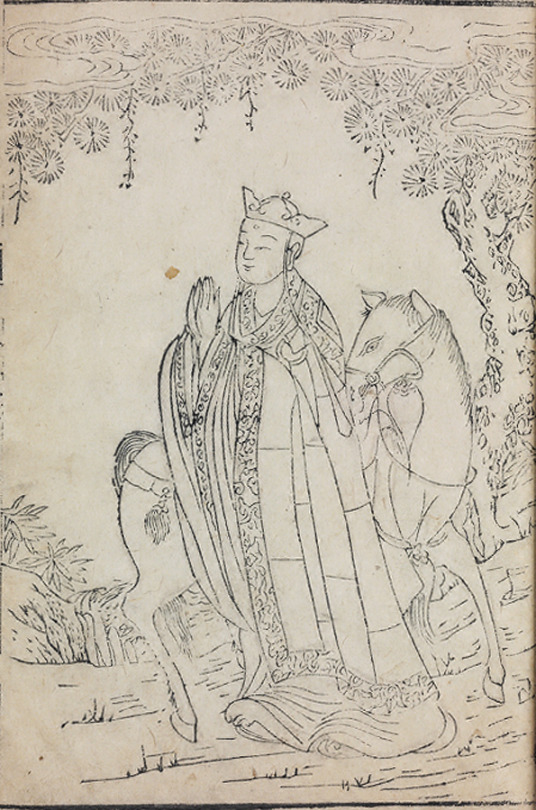
Xuanzang, as depicted by an unknown Qing artist (wikimedia commons)
While much about Zanmu’s character - her backstory as an eccentric fallen monk who became a demon, her apparent zen theme, and so on - all form a coherent whole, there is a tiny detail which does not really match anything else discussed in this article.
It does not come from her dialogue or bio, but rather from Enoko’s. As we learn, she became immortal herself after eating a piece of Zanmu’s body back when the latter was still a human. Or rather, the combination of that and subsequently consuming a magical gemstone as recommended by Zanmu did it - I’m pretty sure I misread this before. As 9 pointed out to me, probably the implications are just that Enoko’s backstory is a partial reference to Perfect Memento in Strict Sense, which does state that consuming the flesh of a monk would be a particularly suitable way for an ordinary animal to turn into a youkai.
Still, comparisons between this tidbit and Journey to the West have been made by others before already, so I figured it would be suitable to address them here even if they lie beyond my own argument about the inspiration behind Zanmu. In this novel, many demons want to devour its protagonist Tang Sanzang because his flesh is said to make anyone who consumes immortal. This is because he is a reincarnation of Master Golden Cicada (Jinchan zi, 金蟬子), a disciple of the Buddha invented for the sake of the story. Interestingly, Sanzang is portrayed as an adherent of Chan Buddhism, the school from which Japanese Zen is derived (note that his historical forerunner Xuanzang belonged to the Yogācāra tradition instead).
Despite the vague similarities, I ultimately do not think there are particularly close parallels between Zanmu and Sanzang. For starters, Zanmu is meant to be a corrupt monk, while Sanzang is the opposite of that. Their respective characters couldn’t differ more either. Throughout the entire novel, Sanzang is a pretty poor planner, shows doubt in his own abilities, and regularly misjudges the situation. Needless to say this does not exactly offer a good parallel to Zanmu. Sure, she creates a bootleg Wukong, but Sanzang did not create Wukong, the famous primate was just assigned to him as a bodyguard. Therefore, until evidence on the contrary appears (for example in an interview) I would personally remain cautiously pessimistic regarding a possible connection here.
Recommended reading
Bernard Faure, Rage and Ravage (Gods of Medieval Japan vol. 3)
Noga Ganany, Baogong as King Yama in the Literature and Religious Worship of Late-Imperial China
Zornica Kirkova, Roaming into the Beyond: Representations of Xian Immortality in Early Medieval Chinese Verse
Christoph Kleine & Livia Kohn, Daoist Immortality and Buddhist Holiness: A Study and Translation of the Honchō shinsen-den
Livia Kohn, The Looks of Laozi
James Robson, The Institution of Daoism in the Central Region (Xiangzhong) of Hunan
Haruko Wakabayashi, From Conqueror of Evil to Devil King: Ryogen and Notions of Ma in Medieval Japanese Buddhism
Idem, The Seven Tengu Scrolls. Evil and the Rhetoric of Legitimacy in Medieval Japanese Buddhism
251 notes
·
View notes
Photo

Red-figure amphora with Nike holding a kithara, attributed to the Berlin Painter
Greek (from Attica), Classical Period, 490-460 B.C.
terracotta
Saint Louis Art Museum
#vase painting#amphora#ancient art#archaeology#Berlin Painter#Greek#Ancient Greece#Attica#Classical Period#Classical Greece#terracotta#ceramic#ceramics#red-figure#kithara#Saint Louis Art Museum#SLAM
125 notes
·
View notes
Text
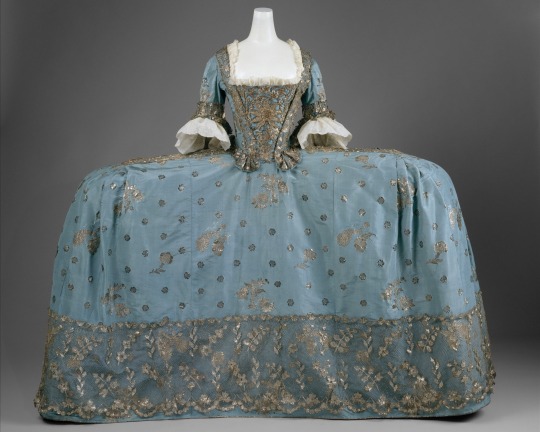
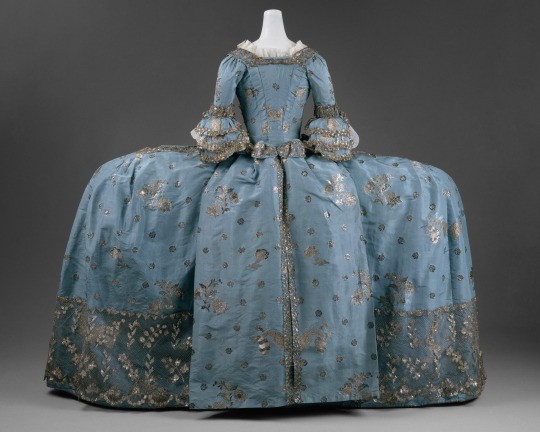
Blue Silk Court Dress with Silver Embroidery, ca. 1750, British.
Met Museum.
#court dress#court attire#1750s#1750s britain#extant garments#1750s extant garment#1750s dress#1750#blue#silk#silver#womenswear#dress#British#met museum#1750s court attire#embroidery
171 notes
·
View notes
Video
José Parlá, Coral Way, Alive Five, 2015, acrylic, oil, ink, collage, fabric, plaster on wood, 10/26/23 #stlartmuseum #sculpture by Sharon Mollerus
#Saint Louis Art Museum#Coral Way#Missouri#collage#oil#plaster on wood#Alive Five#2015#ink#José Parlá#fabric#acrylic#St. Louis#MO#flickr
8 notes
·
View notes
